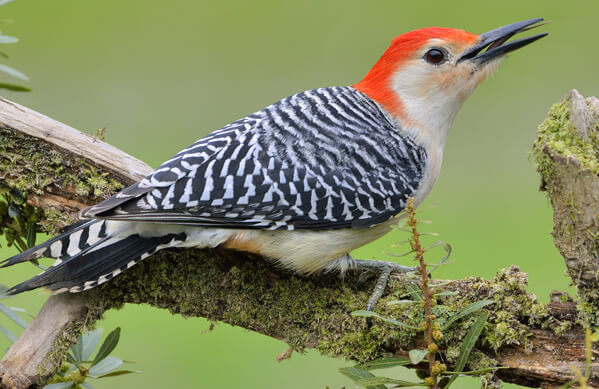Coming Across Woodpeckers in Florida: Species Variety and Identification
Coming Across Woodpeckers in Florida: Species Variety and Identification
Blog Article
Revealing the Tricks of Woodpeckers: Behavior, Habitat, and A Lot More
Woodpeckers, with their special actions and specialized adaptations, have actually long interested scientists and nature fanatics alike. By discovering the enigmas bordering woodpeckers' behavior and habitat selections, a much deeper understanding of these bird marvels arises, offering a glance into their remarkable globe.
Woodpecker Behavior Insights
In taking a look at woodpecker actions, an interesting display of specialized abilities and adaptations arises, losing light on their amazing environmental specific niche. Woodpeckers, recognized for their unique drumming on trees, possess a range of behavior attributes that contribute to their survival and success in their environment.
Moreover, woodpeckers show an one-of-a-kind feeding actions defined by their capability to remove insects from tree bark utilizing their specialized beaks. Their lengthy, barbed tongues aid in capturing target, while their strong neck muscles supply security and accuracy throughout pecking activities. This feeding method permits woodpeckers to access concealed insect larvae and extract them with impressive performance.
Environment Preferences and Choice
What factors affect the habitat choices and choice of woodpeckers? One vital element affecting woodpecker habitat selection is the availability of appropriate nesting websites. Woodpeckers normally like forests with a mix of mature trees that supply enough possibilities for dental caries excavation.
In addition, woodpeckers reveal a choice for habitats with a bountiful supply of food sources. They are mostly insectivorous, feeding on beetles, ants, larvae, and other insects located in decaying timber or tree bark. Therefore, woodpeckers tend to prefer wooded locations with a varied insect population to meet their dietary requirements.
Additionally, the visibility of dead or decaying trees is an additional essential consider woodpecker habitat selection. These trees not just give food sources yet also supply ideal substrate for tooth cavity excavation. Dead trees are vital for the maintenance of healthy and balanced woodpecker populations, as they play an important duty in the woodpeckers' life process and ecosystem dynamics.
Feeding Routines and Diet Structure
Woodpeckers show a specialized feeding behavior focused on foraging for pests within different environments. Their diet mostly is composed of bugs such as beetles, ants, caterpillars, and crawlers, which they situate by tapping on tree bark and paying attention for the sound of movement inside. Woodpeckers utilize their strong beaks to pierce right into the timber and their lengthy, barbed tongues to draw out target from holes. Along with insects, woodpeckers additionally take in tree sap, fruits, nuts, and seeds, adding range to their diet plan depending upon the period and availability of food resources.
The foraging methods of woodpeckers are well-adapted to their arboreal way of life. Woodpeckers play a vital function in maintaining the health and wellness of woodlands by managing insect populations and helping in the decomposition of wood.
Drumming Seems and Interaction
Using fast drumming sounds on various surfaces, woodpeckers use a look at this site distinctive kind of interaction to signify region boundaries and attract companions. This drumming habits is not just a way of interaction however likewise functions as a means for woodpeckers to develop their visibility within a specific location. The intensity, speed, and pattern of the drumming can communicate vital details to various other woodpeckers in the vicinity.
Woodpeckers utilize drumming sounds to announce their visibility in a territory and to caution off potential intruders. The loud and repeated nature of the drumming acts as a clear signal to other woodpeckers that the location is already claimed. This aids in lowering disputes and lessening physical battles in between people.

Survival Adaptations and Specialized Makeup

Verdict
To conclude, woodpeckers exhibit unique habits, such as drumming noises for interaction, and have actually specialized composition for survival in their picked habitats. Their feeding routines and diet regimen composition additionally show their flexibility to various settings. By recognizing these aspects of woodpeckers, researchers and conservationists can better secure and preserve these fascinating birds and their environments.
Report this page